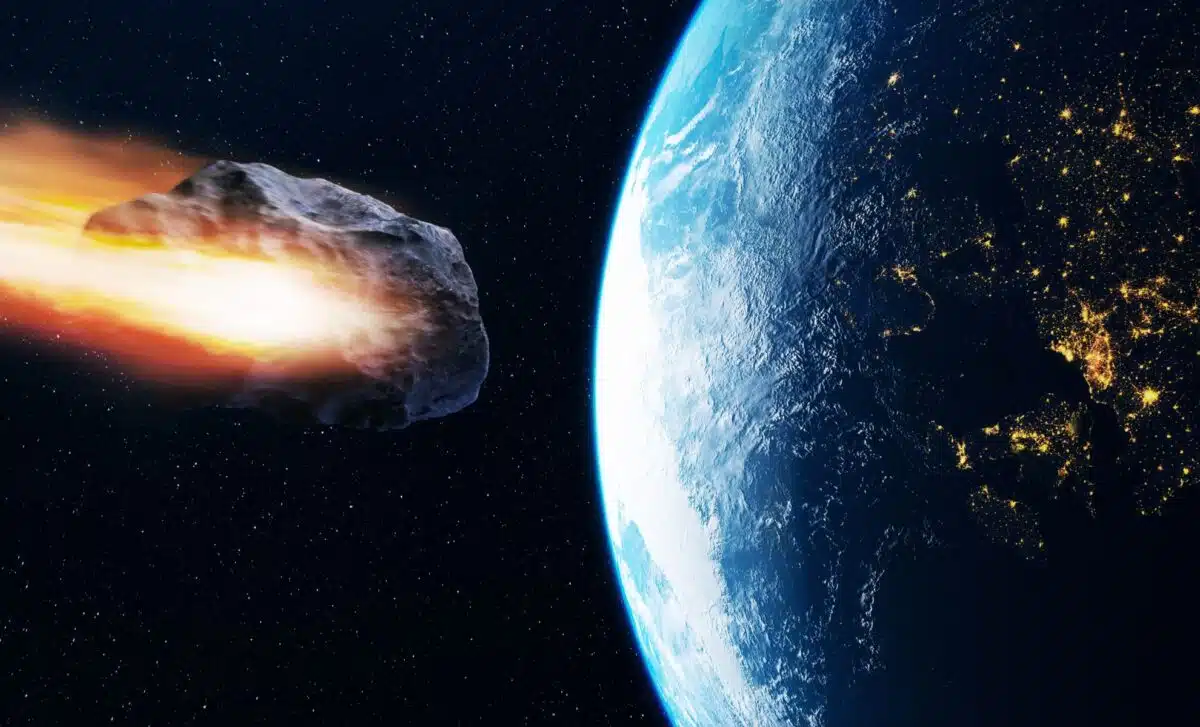
By Lydia Amazouz Published on May 27, 2024 10:31
Collected at : https://dailygalaxy.com/2024/05/china-ukraine-technique-monitor-asteroid/
A collaborative research team from China and Ukraine has developed an innovative technology aimed at mitigating the risks posed by near-Earth asteroids (NEAs).
This groundbreaking method, known as the rotating-drift-scan (RDS) charge-coupled device (CCD) technique, significantly enhances the accuracy of observing rapidly moving asteroids, thus improving the precision of their orbit determination. The successful implementation of this technique is a testament to the power of international collaboration in addressing global challenges such as planetary defense.
The Threat of Near-Earth Asteroids
Near-Earth asteroids are celestial bodies whose orbits bring them into close proximity with Earth. These asteroids pose a significant threat due to the potential for catastrophic impacts, which could have devastating consequences for the planet.
Accurate monitoring and precise orbit determination of NEAs are crucial for assessing the risk of potential collisions and for devising strategies to prevent such events. Traditional observation methods often result in streaked images when capturing fast-moving objects, thereby reducing the accuracy of positional measurements. This limitation underscores the importance of developing new techniques that can provide clearer, more precise data.
The potential impact of an asteroid on Earth could result in severe damage, including massive loss of life, environmental destruction, and long-term climatic changes.
Historical events, such as the impact that contributed to the extinction of the dinosaurs, highlight the importance of monitoring and mitigating asteroid threats. As human civilization becomes more advanced and dependent on technological infrastructure, the ability to predict and prevent such catastrophic events becomes increasingly critical. This is where the collaboration between Chinese and Ukrainian astronomers has made significant strides.
Innovative Observation Technique
The rotating-drift-scan (RDS) CCD technique, pioneered by researchers from the Shanghai Astronomical Observatory under the Chinese Academy of Sciences and the Mykolaiv Astronomical Observatory, addresses the challenges posed by traditional observation methods.
This technique allows asteroids to be imaged as point sources even during long exposure times, effectively eliminating the streaking that typically occurs with rapidly moving objects. The RDS CCD technique involves synchronizing the telescope’s movement with the asteroid’s trajectory, effectively freezing the asteroid’s motion and resulting in clearer, more accurate images.
This innovation is particularly important for NEAs, whose swift movements across the sky can otherwise complicate precise measurements.
The research team utilized this technique to analyze over 11,000 positional measurements of nearly 500 NEAs. These observations were captured by two 50-centimeter telescopes located in Xi’an, China, and Mykolaiv, Ukraine, over several years. The extensive dataset collected through this method has significantly contributed to the precise orbit determination of these asteroids.
By obtaining more accurate positional data, scientists can better predict the future paths of NEAs and assess their potential threat to Earth. This precision is crucial for early warning systems and for planning potential deflection missions to prevent collisions.
China and Ukraine’s Role in Enhancing Global Monitoring Systems
The success of the RDS CCD technique demonstrates its potential to be integrated into a global network of small-aperture telescopes. This integration could greatly enhance the international NEA monitoring system, providing a more robust framework for detecting and tracking asteroids that pose a potential threat to Earth.
By improving the accuracy of asteroid observations, this technique helps ensure that timely and effective measures can be taken to mitigate the risks of asteroid impacts. Such a network would allow for continuous monitoring of the skies, increasing the likelihood of early detection of hazardous asteroids.
The international collaboration between Chinese and Ukrainian astronomers highlights the importance of shared scientific efforts in tackling global challenges. By pooling resources and expertise, countries can develop more effective solutions to common threats.
The implementation of the RDS CCD technique in a global monitoring system would represent a significant advancement in planetary defense, providing a model for future collaborative efforts. The ability to quickly and accurately identify potential asteroid threats would allow for more time to develop and implement strategies to protect Earth.
Publication and Future Prospects
The findings from this collaborative effort were published in the Astronomical Journal, highlighting the significant advancements in asteroid monitoring technology. The study underscores the importance of international cooperation in addressing global threats and showcases the innovative solutions that can emerge from such collaborations.
The publication of these findings in a reputable scientific journal ensures that the knowledge gained from this research is accessible to the global scientific community, encouraging further study and development in this field.
Moving forward, the research team plans to continue refining the RDS CCD technique and exploring its applications in other areas of astronomical observation. The successful development and implementation of this technology mark a pivotal step in safeguarding Earth from potential asteroid impacts and enhancing our understanding of near-Earth objects.
Future research will likely focus on optimizing the technique for different types of telescopes and expanding its use to other astronomical phenomena. The continuous improvement of this method will enhance its utility and effectiveness in various observational contexts.
By leveraging advanced observational techniques and fostering international collaboration, scientists are better equipped to tackle the challenges posed by near-Earth asteroids.
The work of the China-Ukraine research team represents a significant contribution to planetary defense and sets the stage for further innovations in the field of asteroid monitoring. As more countries recognize the importance of monitoring and mitigating asteroid threats, the development of global networks and collaborative research initiatives will become increasingly important.

Leave a Reply